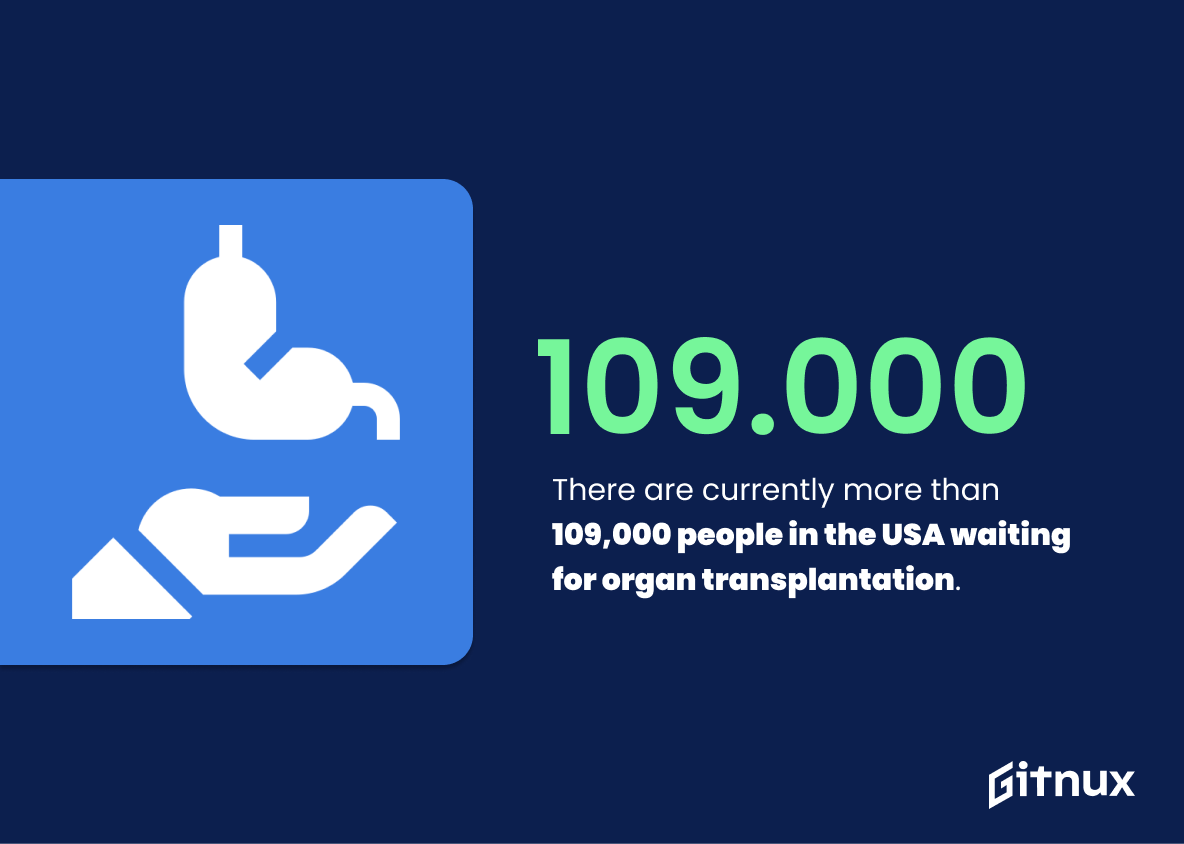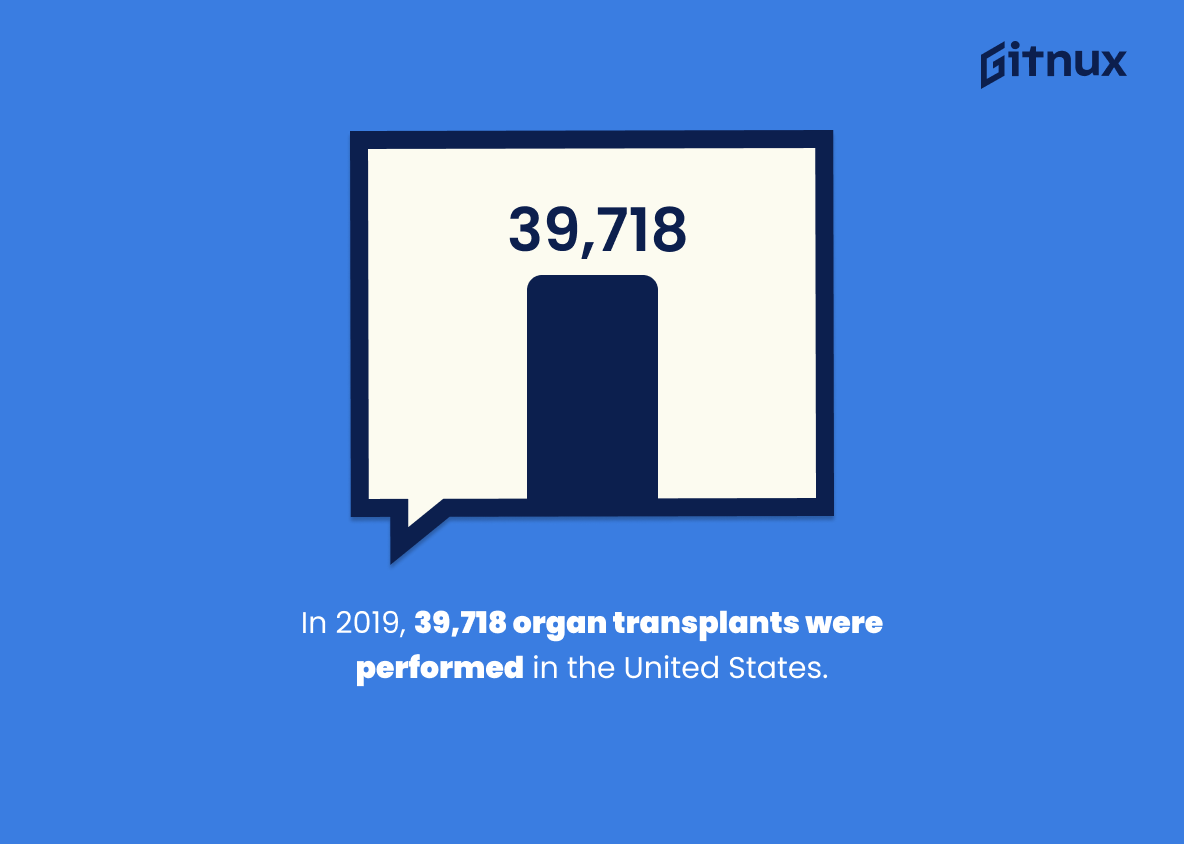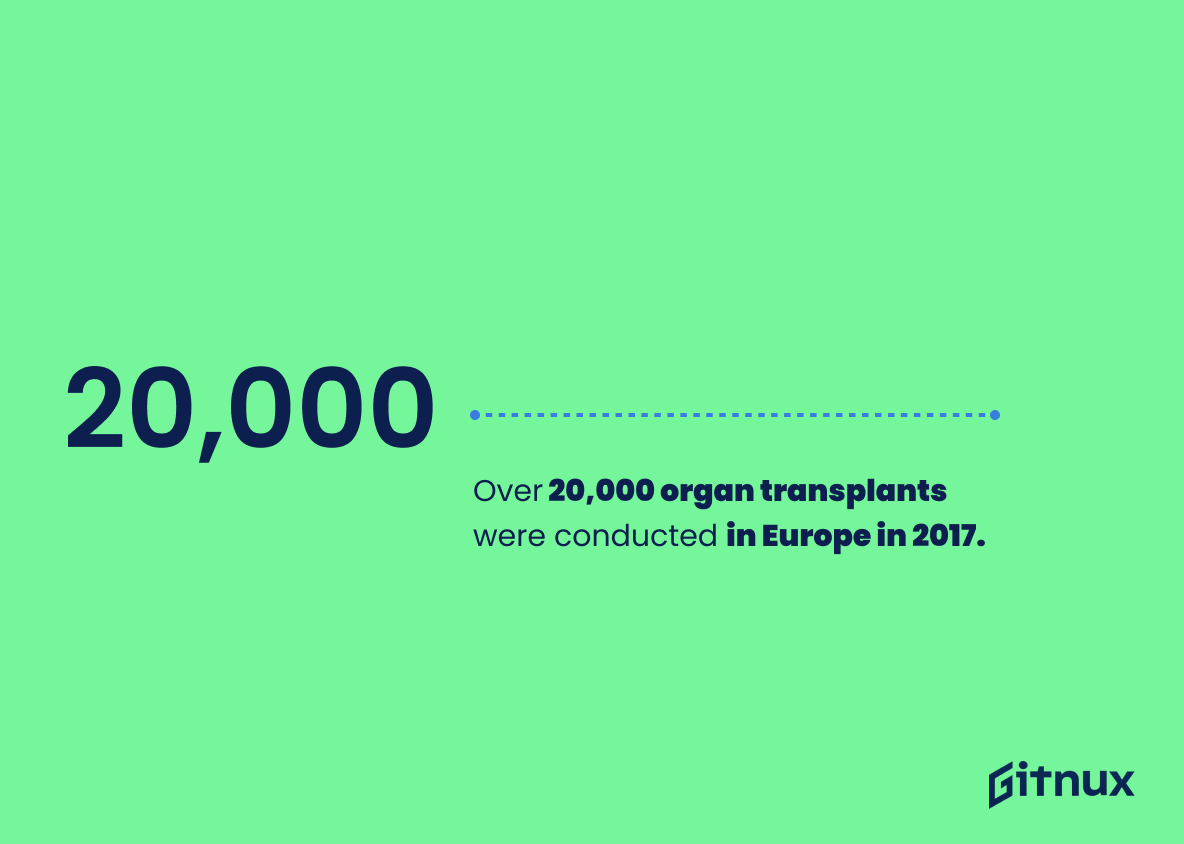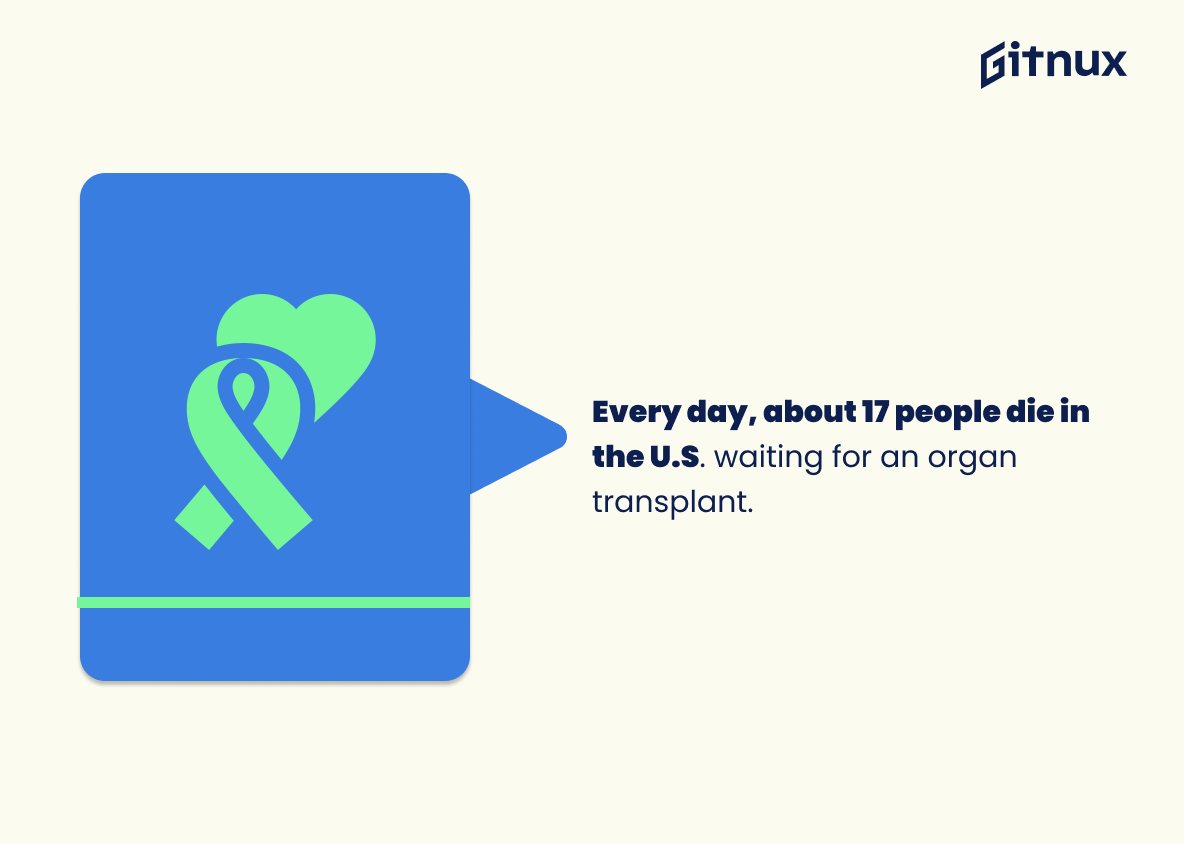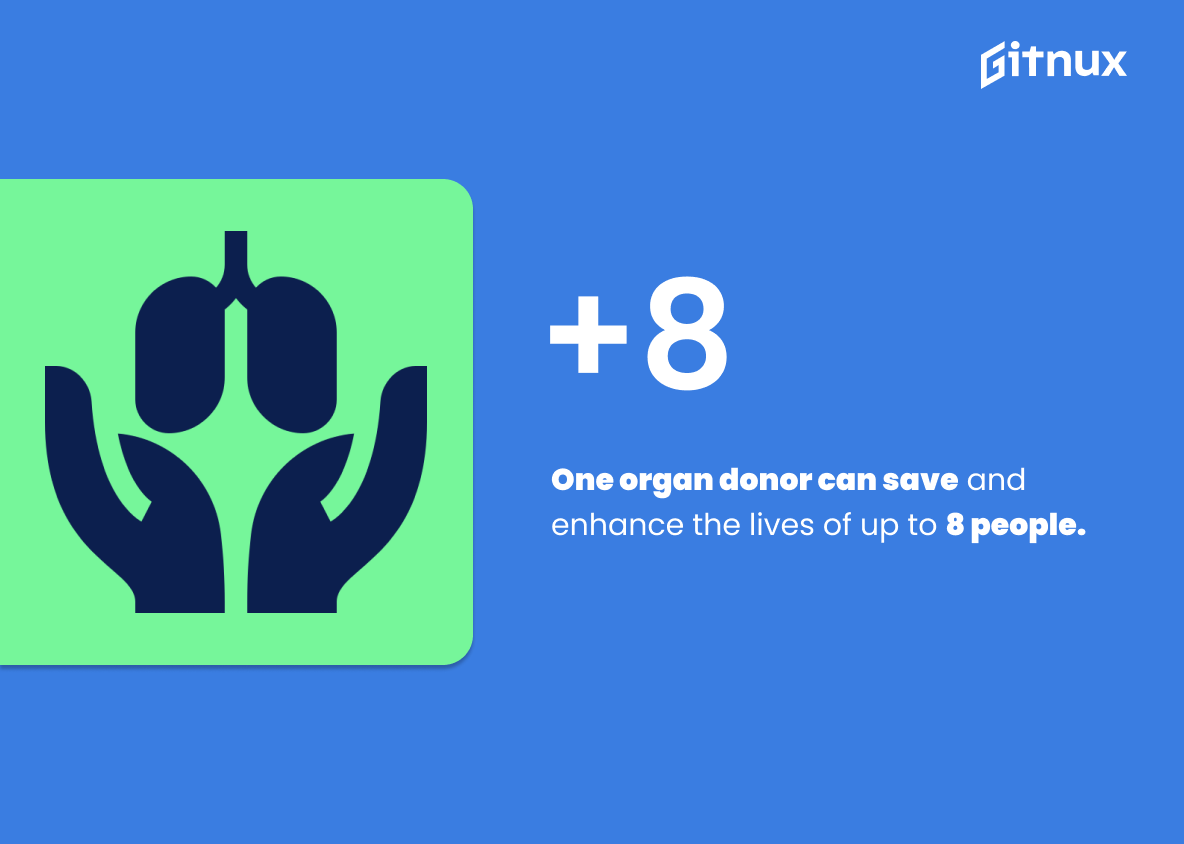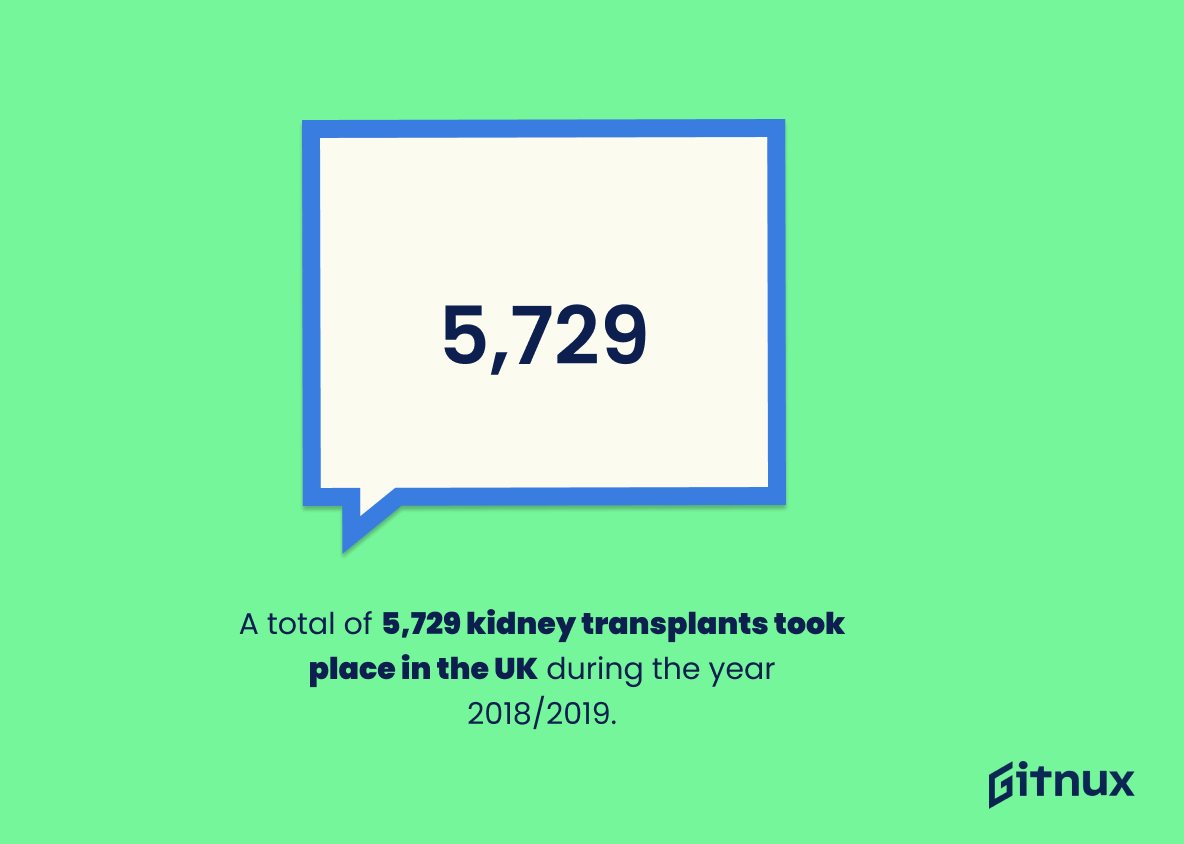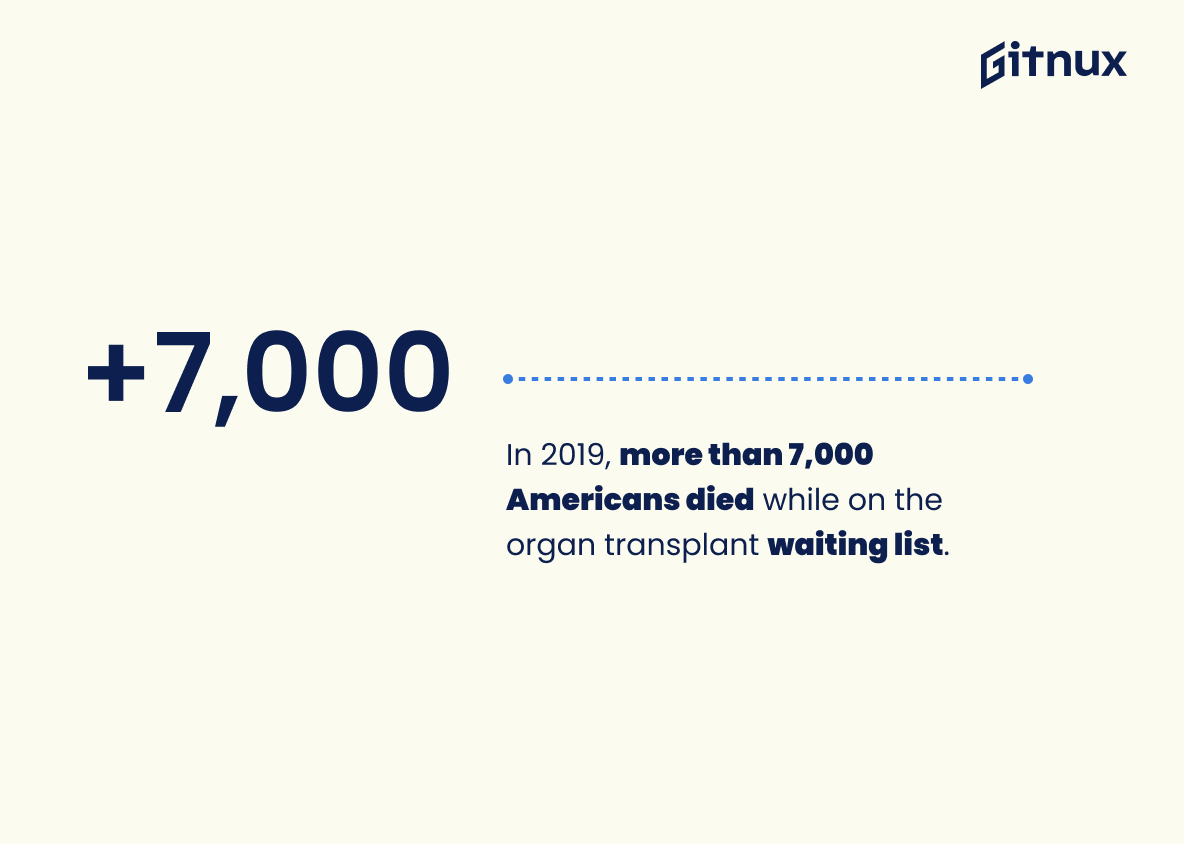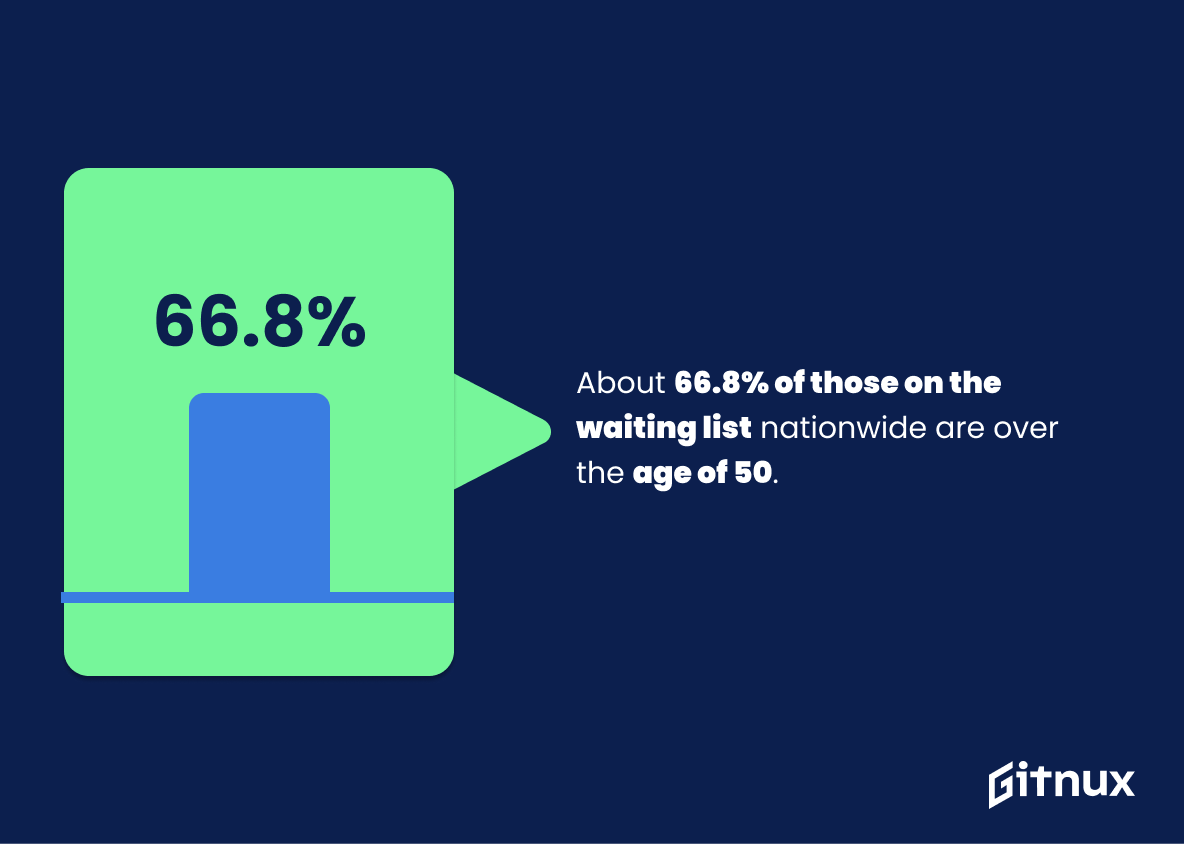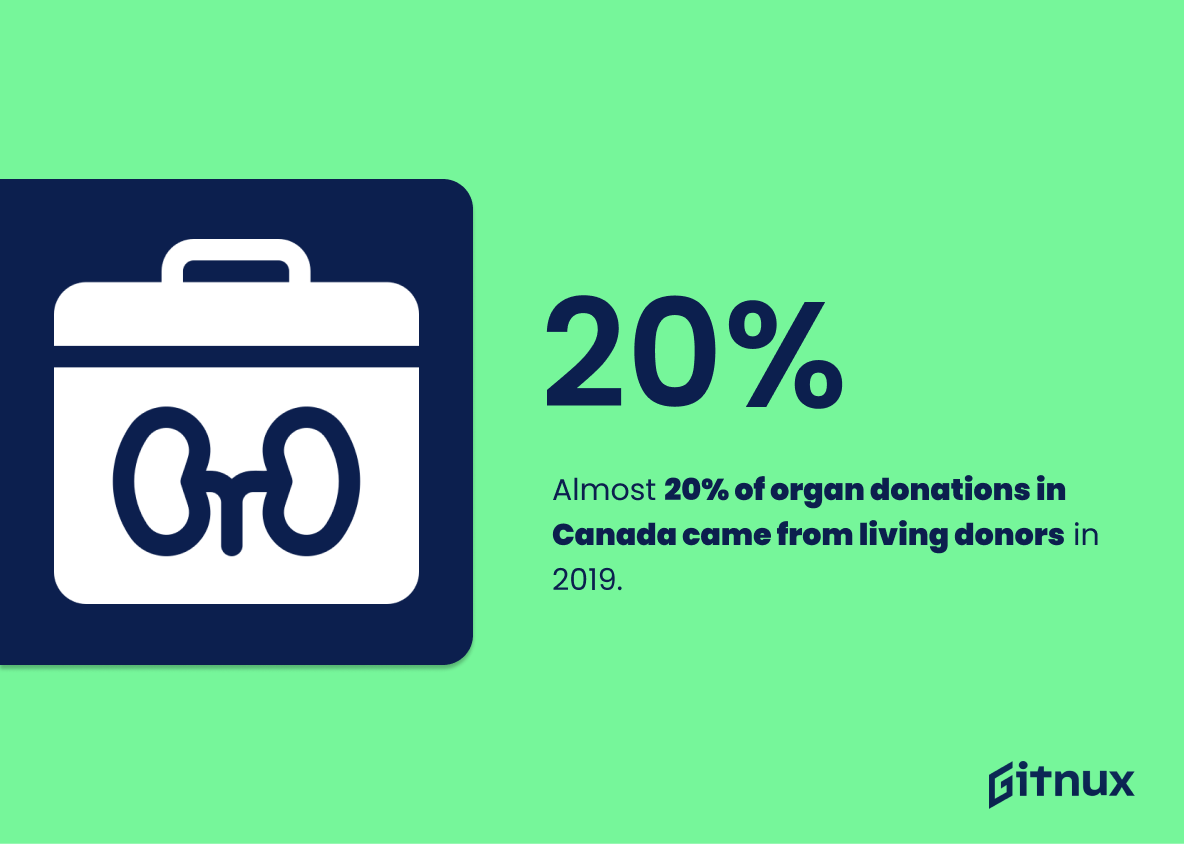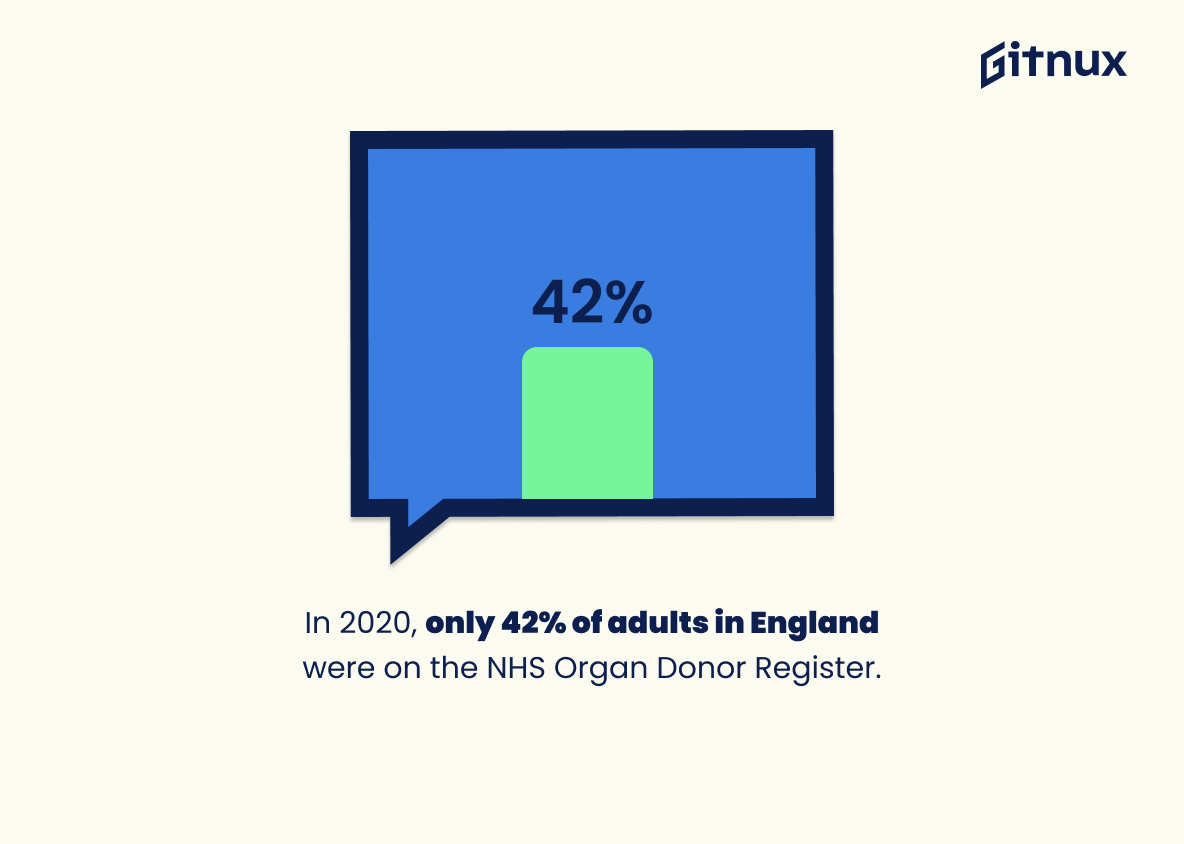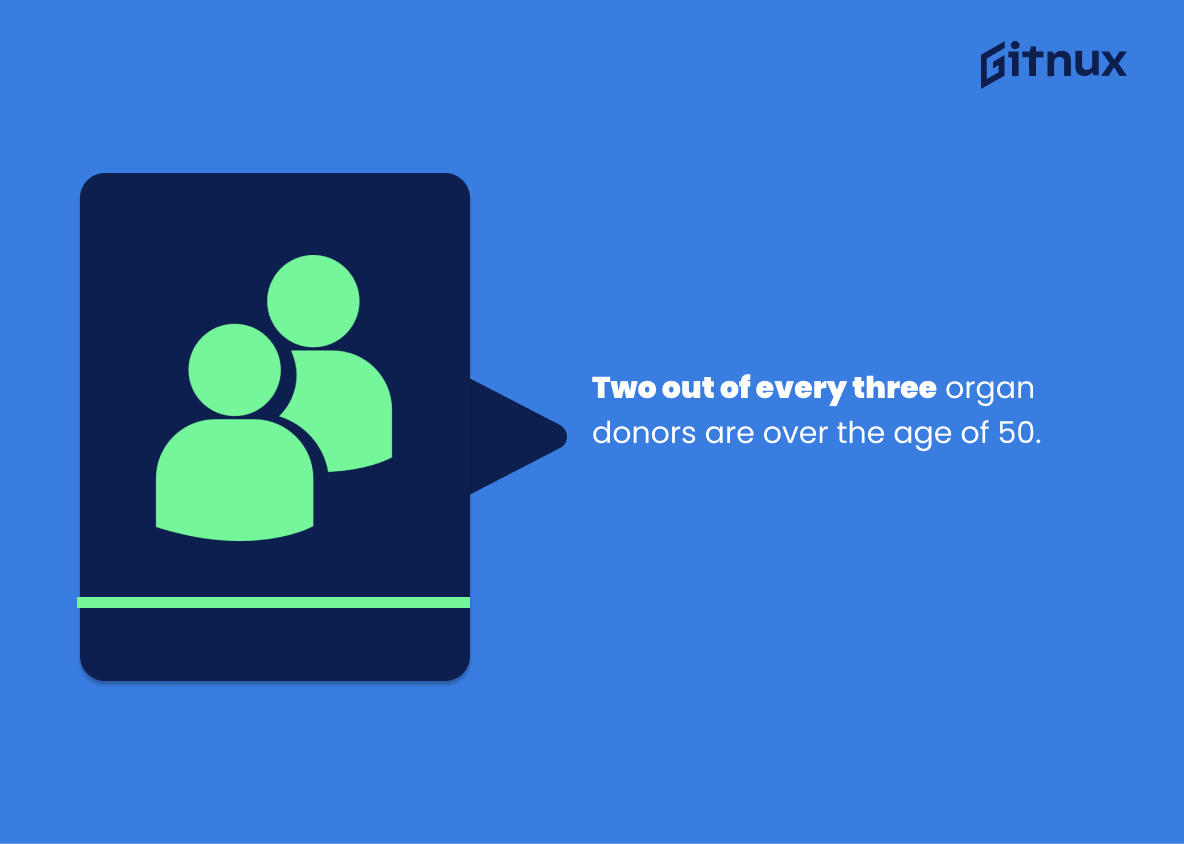In the arena of life-saving medical procedures, organ donation plays an incredibly critical role. However, the subject is shrouded in misinformation, myths, and a significant amount of unawareness, often leading to a considerable disparity between donors and recipients. This blog post aims to shed light on organ donation statistics, providing a stark look at the current landscape. Understand the reality of organ donation shortfalls, the breathtaking impact of successful donations, and how one decisive action can ripple out to save or improve numerous lives. Read on as we break down the numbers, debunk misconceptions, and chart the course towards a future where no life is lost due to a lack of organ donors.
The Latest Organ Donation Statistics Unveiled
There are currently more than 109,000 people in the USA waiting for organ transplantation.
Painting a vivid landscape of the organ donation scenario, the staggering number of over 109,000 individuals awaiting organ transplantation in the USA lays bare the magnitude of need. This poignant figure underscores the scale of the narrative, serving as a catalyst of awareness and urgency. Through these digits, we navigate the gravity of the situation, illuminating the gaps in organ donation and the latent potential that lies within each one of us to change the narrative.
In 2019, organs were recovered from 10,721 deceased donors in the United States.
Highlighting the impressive number of 10,721 organs retrieved from deceased donors in the United States in 2019 underscores the monumental contribution of brave individuals and their families towards giving life in the face of death. This figure, while being just a number, symbolizes the immense reservoir of compassion within our society, inspiring more individuals to register as organ donors. Through this, the blog post paints a promising picture of the organ donation landscape, acknowledging the selfless sacrifices made and illustrating the potential for even greater life-saving possibilities in the future.
In 2019, 39,718 organ transplants were performed in the United States.
Within the arena of organ donation, the metric of 39,718 organ transplants performed in the United States in 2019 punctuates the evolving narrative of medical progress and generosity. The significance of this figure twins as a testament to the headway made in medical sciences enabling life-transforming transplants, and a mirror reflecting the altruism of human beings willing to give the unmatched gift of life. Serving as an unambiguous benchmark, it impels us to reckon the potential lives saved and improved, and the incessant need to drive organ donation advocacy forward.
Over 20,000 organ transplants were conducted in Europe in 2017.
Illuminating the magnitude of the organ donation movement, a staggering figure of over 20,000 organ transplants were carried out in Europe alone in 2017. This not only exemplifies the critical role this lifesaving procedure plays in healthcare, but also underscores the potential and promise it holds to save countless lives if supported by increased awareness and participation. These organ donation statistics scribe a narrative of hope and healing, paramount in our blog’s quest to enable more such stories of renewed life.
Every day, about 17 people die in the U.S. waiting for an organ transplant.
Painting in stark relief the desolate reality of the organ donation scenario, the daily death toll of 17 individuals heralds an urgent call to action. Unmasking the grim side of this narrative, it sheds light on the chasm that exists between the supply and demand of organ transplants – underscoring the dire need for more donors. The statistic becomes the heartrending human face of a widespread crisis, igniting conversations around the effectiveness of current organ procurement mechanisms and pushing for collective brainstorming to stem the tragic tide. In essence, these numbers don’t just quantify grief, they propel the vital discourse on organ donation towards a hopefully brighter horizon.
95% of U.S. adults support organ donation but only 60% are actually signed up as donors.
Unraveling this compelling contradiction paints a striking portrait of the organ donation landscape across the U.S. adults. The high 95% support rate suggests a broad societal consensus seeing the necessity and altruism of organ donation. Yet, plunging to a mere 60% actually signed as donors hammers home a glaring dissonance between support and action. Such discrepancy serves as an alarm call, hinting towards the existence of roadblocks such as misinformation, lack of awareness or procedural complexities that thwart 35% of adult Americans from transforming their support into a life-saving deed. Therefore, addressing this gap actively in the organ donation conversation could be a critical catalyst to elevate the actual donor numbers towards the perceived support, thus timely saving many more lives awaited for organ transplants.
One organ donor can save and enhance the lives of up to 8 people.
Delving into the compelling world of organ donation statistics, one might be struck by the remarkable fact that just a single organ donor can bear the potential to save and enrich the lives of up to eight individuals. It’s a powerful piece of data that casts a spotlight on the monumental impact of each donor in addressing the urgent demand for organ transplants. This very statistic injects a dose of hope into the narrative, humanizing the numbers and amplifying the life-transforming ripple effect one person can set in motion. It also underscores the urgency and significance of organ donation, urging readers to contemplate about the tremendous difference they can make in the lives of desperate patients awaiting transplants.
A total of 5,729 kidney transplants took place in the UK during the year 2018/2019.
Envision this: A whopping 5,729 tales of renewed life unfolded in the UK in the span of just one year (2018/2019), all thanks to kidney transplants. Each of these numbers represents a beacon of hope, a testament to the power of organ donation. This monumental figure enriches our perspective on the sheer volume of lives touched— and distinctly transformed—by the generous act of giving and receiving kidneys. It not only illuminates the impact of organ donation in battling kidney-related diseases but also serves as a mirror reflecting our society’s collective empathy, courage, and commitment to saving lives. Quite the compelling narrative, wouldn’t you agree?
In 2019, more than 7,000 Americans died while on the organ transplant waiting list.
Painting a stark portrait of urgency, the statistic highlighting the loss of over 7,000 American lives in 2019 while waiting for organ transplants vividly underscores the severe shortage of organ donors. It stands as a ghostly testament to the silent crisis where waiting lists snuff out hopes, and each tick-tock of the clock could be a difference between life and death. In the intricate tapestry of organ donation discourse, it offers indisputable proof of the burgeoning gap between organ demand and availability. This punctuates the critical necessity for more people to step forward as organ donors, offering a tangible route to hedge against such devastating loss.
About 66.8% of those on the waiting list nationwide are over the age of 50.
Shining the spotlight on this intriguing figure – around 66.8% of those on nationwide organ donation waiting lists are over the age of 50. What resonates from this data echo is a silent plea to evaluate our organ donation strategies and policies. It’s a bold punctuation mark on the narrative of age demographics in organ transplantation, emphasizing the dire need for organ donors across older age groups. This statistic is instrumental in opening dialogues and creating awareness about the poignant reality, and also a catalyst in shifting perceptions about potential barriers in organ donation for the older populace.
For the 1,000 living people who donated a kidney in Australia in 2017, another 11,000 considered donating but did not.
Painting a vivid picture with numbers, this particular statistic serves as a powerful illustration of the contextual conversation around organ donation. It magnifies the towering gap between contemplation and action. While numerous individuals considered the altruistic act of kidney donation in Australia in 2017, the actual number of individuals who completed the process was considerably smaller. It propagates a candid conversation about possible barriers or fears that potential donors face. This statistic is crucial in stimulating discourse and strategizing solutions to bridge this divide, acting as the beating heart of our organ donation analysis in the blog post.
Almost 20% of organ donations in Canada came from living donors in 2019.
Highlighting the statistic that nearly one fifth of organ donations in Canada in 2019 were contributed by living donors, paints a story of courage and altruism. In the vast expanse of organ donation, this aspect personifies the immense generosity of individuals willing to part with a piece of themselves to save another’s life. This fact not only enriches the blog post with its emotive potential, but also emphasizes an often underappreciated aspect of organ donation. Furthermore, understanding this data can be essential in fueling critical conversations around the ethics, medical advancements, and policies surrounding live organ donation. It’s this piece of information that challenges us to ponder upon our own capabilities of generosity, as well as to acknowledge and celebrate these unsung heroes.
In 2020, only 42% of adults in England were on the NHS Organ Donor Register.
Spotlighting the compelling fact from 2020 where less than half, precisely 42%, of England’s adult population found their names on the NHS Organ Donor Register, uncovers the stark reality of potential organ donors’ minimal participation. This key finding showcased in a blog post about Organ Donation Statistics could shape new dimensions of discussion. It emphasizes the urgency to address comprehensible public awareness and efficient policy considerations, probing into the underlying reasons for this rather low engagement. Furthermore, it offers readers, especially potential donors, a chance to reflect on the profound impact they can have on diminishing the organ donation waiting list and perhaps saving lives hinged on this hope.
Only 3 in 1,000 people die in a way that allows for organ donation.
Peering through the lens of these figures, it paints a vivid picture of the stark scarcity faced in organ donation. The rarity of circumstances in which someone passes away allowing for organ donation—merely 3 in 1,000—impresses upon us the critical shortage of organ donors. It serves as an eye-opener, unveiling the harsh reality and urgency of the situation. Undoubtedly, such scarcity underscores the essentialness of every single potential donor. Ensuring we grasp the gravity of this paucity fuels an informed discourse about organ donation, inspiring more people to play their part in bridging this life-saving gap. Hence, this data point is not just a statistic; it is a clarion call for all of us to respond to.
Two out of every three organ donors are over the age of 50.
Diving into the statistic that reveals that two thirds of organ donors eclipse the age of 50 unravels a significant layer to the narrative of organ donation. This implies a remarkable dependency on older individuals in the organ donation process, and invites inquiry into the reasons behind this age skew. This could stem from a myriad of factors, such as the propensity of older individuals to register as donors, or a greater prevalence of circumstances that result in organ donation. Against the backdrop of our aging population, this statistic also foretells the possible impact of demographic shifts in the future of organ donation. Injecting this fact into our organ donation discussions therefore, illuminates potential areas of focus for donation campaigns, medical research, and policy-making.
Conclusion
The statistics surrounding organ donation unequivocally illustrate the urgent need for more donors, and the transformative impact one donor can make in the lives of several individuals. The vast discrepancy between those needing a transplant and available organs signifies a serious global issue. One significant step toward addressing this problem is fostering greater public awareness, promoting education about organ donation, its impacts, and debunking prevailing misconceptions. Remember that the choice to become an organ donor isn’t just a personal decision — it’s a chance to leave an indelible mark on the world by offering a second chance at life to those in desperate need.
References
0. – https://www.www.donatelife.net
1. – https://www.optn.transplant.hrsa.gov
2. – https://www.www.kidneyfund.org
3. – https://www.www.organdonation.nhs.uk
4. – https://www.blood.ca
5. – https://www.kidney.org.au
6. – https://www.www.organdonor.gov
7. – https://www.unos.org
8. – https://www.www.kidneyresearchuk.org
9. – https://www.www.eurotransplant.org
